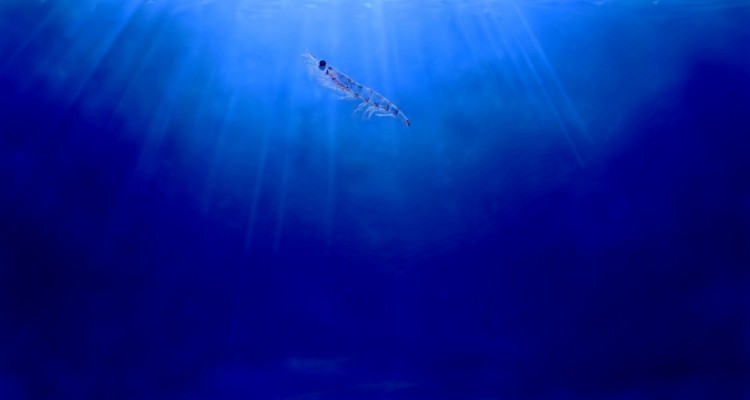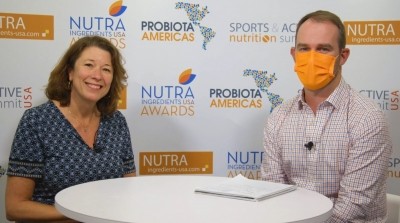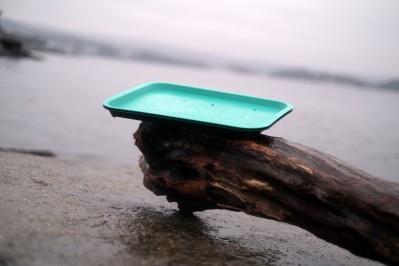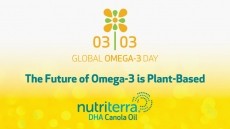Sustainability picture remains bright for marine sources of omega-3s

The omega-3 fatty acids EPA and DHA are available from a number of sources. While algal oil and new plant-based sources are often referred to as the wave of the future, the backbone of the industry continues to be the anchovy fishery off the coast of Peru and to a much lesser extent Chile.
Anchovies do the heavy lifting
In the past the oft cited statistic has been that 70% of the servings of omega-3s in dietary supplements are sourced from this fishery. That continues to be true, said Ellen Schutt, executive director of the Global Organization of EPA and DHA Omega-3s (GOED).
The anchovy fishery off the western coast of South America is fueled by the nutrient rich upwelling of the cold Humboldt Current, named for the German naturalist who first described it in the mid 1800s. The current fuels a fishery which is the world’s most productive. More anchovies by tonnage are harvested every year than any other wild dwelling fish species (farm raised Asian grass carp hold the No. 1 spot).
Anchovies are short lived, highly oily fish that provide a naturally rich source of omega-3s. They are prolific enough to form the basis of two yearly fishing seasons. But the population and the fishing success tends to fluctuate for a number of reasons including water temperature variability in El Niño years. The Peruvian fishing authorities can and do take the seemingly drastic step of closing a fishing season entirely if conditions warrant.
These periods of fishing cessation can be a double edged sword from a public relations standpoint. On one hand, the Chicken Little message might be: The anchovies are running out! But Schutt said a different interpretation is the correct one.
“GOED’s overall position is that for the oils used in the omega-3s industry, the vast majority of them are produced sustainably,” Schutt told NutraIngredients-USA.
“As for the anchovy fishery, in the past three or four years they haven’t opened the fishery a couple of times because the scientific body has determined the conditions weren’t right. There were too few fish, or too many juveniles, or other reasons,” she said.
Schutt also noted that while the omega-3s market is a big one in terms of the dietary supplement industry as a whole, on the world industrial stage and even within the smaller subset of world fisheries it’s an afterthought.
“If the whole omega-3s market were to disappear overnight most of the fisheries around the world would still harvest about the same amount of fish,” she said.
Fisheries certification
Behind the anchovy fishery as an omega-3s source comes Alaskan pollock, which is certified as sustainable by the Marine Stewardship Council. Another source is various tuna species. Unlike the Alaskan or Peruvian fisheries, these are scattered piecemeal around the globe. Some of these are MSC certified, others are not. In any case, Schutt said that the omega-3 oils taken from these fisheries come from the offcuts of food production, material that would otherwise go to waste or to lower value uses.
So what of the world’s largest fishery? Despite the claims made for its careful, science-based management, the Peruvian anchovy fishery has yet to go through the MSC certification process, which for better or worse seems to be the global gold standard for transparency. Schutt said the issue has long been getting the Peruvian fishing companies and the government scientific and policy setting bodies on the same page. In talking with GOED members from the region, Schutt said it appears this has finally happened, and MSC certification is expected in 2021.
Krill as a bright spot
One of the brightest spots in the marine source omega-3s sustainability picture is the krill fishery, Schutt said. The world’s largest harvester of krill is Norwegian company and GOED member Aker BioMarine AS. Aker now brings in more than 60% of the world’s krill harvest and has long been known for actively supporting science activities relating to the Antarctic ecosystem and krill’s unique place within it. It has been said that every higher species in the region either feeds on krill directly or feeds on something that feeds on krill, so the importance of this pelagic crustacean cannot be overstated.
Runa Haug Khoury, Aker’s director of sustainability and public affairs, said Aker had cooperated in a new population assessment, the first in many years, which brought back good news.
“An international survey of the krill biomass around the Antarctic Peninsula was conducted in late 2019 and confirmed that the Antarctic krill biomass is in solid shape and that the krill fishery is built on a very solid foundation,” Khoury said.
Khoury noted that the 2019 population estimate showed slightly more krill that were found in 2000, the last year a population survey was conducted. She noted that the maximum permissible harvest rate is set at only 1% of this figure in the area where Aker does its fishing, known as Area 48 on the south side of the Drake Strait which separates Antarctica from South America.
“The findings give us great confidence that the krill fishery continues to be one of the most precautionary fisheries,” she said.
In the past Aker has devoted ship time to research activities and recently brought a new fishing vessel online (its third in Antarctica) that has a greatly expanded laboratory capacity. In addition, the company also pioneered a new technology for the region, a sonar-equipped sailing drone that can find krill swarms without burning fuel, helping the company’s ships operate more efficiently thereby cutting the fleet’s overall carbon footprint.
Sustainability as differentiator
Khoury said that kind of commitment to traceability is something that will set companies apart in a crowed market filled with increasingly well informed consumers.
“A growing number of consumers are not willing to accept health and wellness products that compromise the environment and ecosystems. Fortunately, this demand is requiring many companies to respond in a positive way. Companies that take social and environmental responsibility seriously will thrive in tomorrow’s market. This includes a number of things, but for us the key aspect is business leadership should take positive actions regarding ingredient sourcing as well as continually look to improve supply chains. There is no question that for businesses to grow and succeed in our industry, they must prioritize sustainability and traceability,” she said.
Limit on marine sources
Even with the good news about the sustainability of marine sources, Schutt said GOED members are well aware that as the market expands it will reach a limit. The current recommendation is for a daily intake of 500 mg of EPA and DHA to support optimum health, and the new positive meta analysis published today has the organization considering whether that should be revised upward to one gram every day. There are not enough fish in the ocean to meet even that lower requirement for every person now living on Earth, she said, so new sources of omega-3s will find market opportunities, such as oils from plants and algae.
“Algae has proven challenging to get to that commercialization phase. It has taken almost every company, especially on the EPA side of the coin, longer than they expected. But there is a lot of interest from vegetarians and vegans. The demand is there for these products,” she said.
















